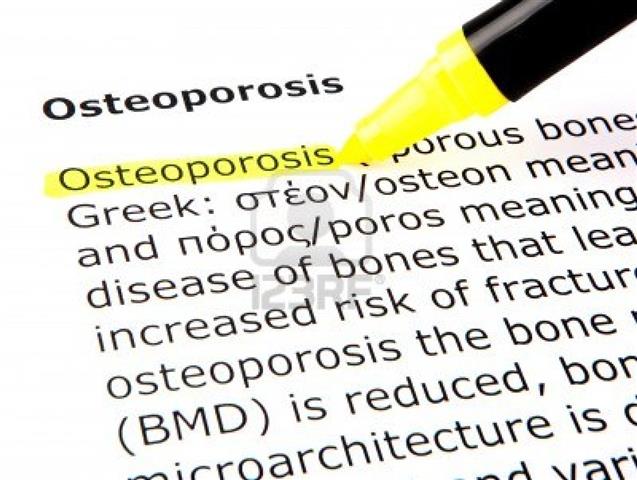One of the most important health issues for middle-aged women is the threat of osteoporosis. Osteoporosis is a condition in which bones become thin, fragile, and highly prone to fracture. Numerous studies have linked estrogen insufficiency to this gradual, yet debilitating disease. In fact, osteoporosis is more closely related to menopause than to a woman’s chronological age.
The risk of osteoporosis increases with age, smoking, heavy alcohol use, a family history of osteoporosis, long-term use of certain drugs (such as cortisone), surgical removal of the ovaries, radiation therapy for cancer of the ovaries, poor nutrition and other factors. Fine-boned women should pay special attention to preserving their bone mass, because they can’t afford to lose any of it.
Factors That Increase Your Risk of Osteoporosis and Fractures
Genetic or Medical Factors
- White (or Asian) ethnicity
- Kidney disease with dialysis
- Early menopause (before age 40)
- Female relatives with osteoporosis
- Being thin (especially if you are short)
- Chronic diarrhea or surgical removal of part of the stomach or small intestine
- Daily use of cortisone
- Daily use of thyroid (over 2 grains), Dilantin, or aluminum-containing antacids
Lifestyle Factors
- Low calcium diet
- Lack of exercise
- Very high-protein diet
- High alcohol use
- Smoking
- Lack of vitamin D from sun, diet, or pills
- High salt diet
- Never having borne children
- High caffeine use (over 5 cups daily)
Minimizing Your Risk of Osteoporosis
The condition of an older woman’s skeleton depends on two things:
- The peak amount of bone mass attained before menopause and
- The rate of the bone loss thereafter.
At about age 30 you achieve your peak bone mass, which is the greatest bone density you will achieve in your entire lifetime. Said another way, in your first 30 years of life, you are laying the foundation for your future bone health. By maximizing your peak bone mass, you ensure the greatest protection possible against the natural bone loss that occurs with age. In other words, the more bone you have at age 30, the more you will have at age 80.
Hereditary factors are important in determining peak bone mass. Black women attain a greater spinal mass and therefore have fewer osteoporotic fractures than white women. Other factors that help increase bone mass include:
- Adequate intake of dietary calcium and vitamin D
- Exposure to sunlight and
- Physical exercise.
The other part of the equation is minimizing age-related bone loss. Until about age 30 you build and store bone efficiently. Then, as part of the aging process, the rate of bone loss begins to exceed the rate of bone building. The good news is that even if you already have osteoporosis you can dramatically slow your rate of bone loss, and in some cases even improve your bone density, by following the recommendations we will outline for you. It’s NEVER too late to do something about bone loss.
The same factors listed above (these same factors) also help slow the rate of bone loss. Certain physiological stresses can quicken bone loss, such as pregnancy, nursing, and immobility. The biggest culprit in the process of bone loss is estrogen deficiency and imbalance. Bone loss quickens during perimenopause, the transitional phase when estrogen levels drop significantly.
Here are several things that you can do to head off or reverse bone loss:
- Avoid fluoridated water (which actually extracts calcium from the bones)
- Eat less, or no, red meat (too much phosphorus, it requires more calcium in the blood stream–often taken from bones-to balance it)
- Drink less of avoid soft drinks
- Don’t smoke
- Eat calcium-rich and boron-rich foods
- Exercise
- Avoid excess caffeine and alcohol
- Take calcium and magnesium supplements (Wellness Essentials for Women Prime with Cal-Apatite Plus or Cal Apatite Forte)


